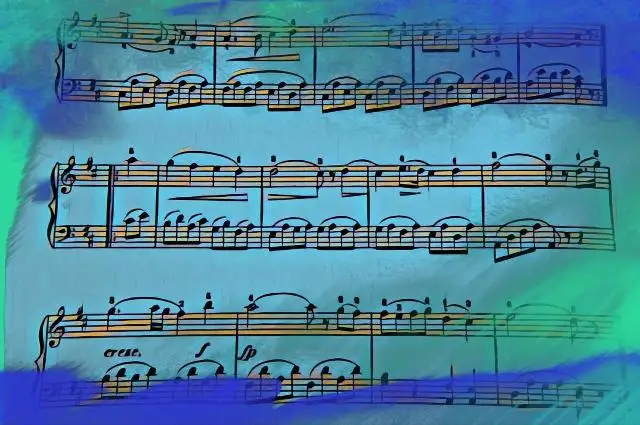When you want to enhance the rhythm of a song, there’s nothing more effective than dividing a beat in an irregular way. Regardless of the genre you’re working on, whether it’s rap or heavy metal, rhythmic variety brought by unconventional time signatures can bring to life a unique flow and capture the attention of listeners.
In order to do that, understanding the theory behind tuplets, and triplets in particular, is a necessary step. So today we’ll take a look at what triplets are, why they’re used across all genres, and how you can use them to take your music to the next level.
What’s a Triplet?
Before delving into the world of triplets, let’s start with the definition of a tuplet. A tuplet is any rhythm that divides the beat into a different number of equal parts from what is standard in the time signature. Therefore, a triplet, a type of tuplet, is a rhythmic pattern that subdivides a beat into three equal parts.
Most modern music is divided into even units, such as quarters, eighths, and sixteenths. Triplets are a common form of irregular rhythm that fits three notes into the space usually occupied by two, resulting in a syncopated feel or polyrhythmic pattern.
Here’s an example: in a 4/4 time signature, where the beat is typically divided into two eighth notes, a triplet is three equally spaced notes played in the same time it would take to play those two eighth notes.
Triplets have been used countless times over the history of music, from Bach to Migos, jazz, and blues, because it’s a rhythmic variation that adds a winging feel to the rhythm, making it more engaging.
A Brief History of Triplet Music
During the Renaissance, composers began experimenting with rhythmic complexity beyond the simpler patterns of medieval music. They started dividing the beat into threes, which was a significant shift from the previously prevailing duple meters, which led to the use of patterns that would later be recognized as triplets.
The use of triplets became more standardized during the Baroque era, with composers like Bach using them to add rhythmic variety and expressiveness to their music.
The term "triplet" itself, along with other tuplets, was only introduced in the Classical period, when numerical indications for irregular divisions started to appear in musical scores to make it easier for performers to understand musical sheets.
During the Romanticism, the triplets became a standard form of variation. At the time, composers like Chopin and Liszt often employed triplets in their piano works to add a sense of rubato or simply to diversify their compositions.
In the 20th century, triplets played a big role in the development of jazz, in which the swing vibe created by the triplet's rhythmic displacement became a vital component in the genre. Later on, triplets transcended the boundaries of classical and jazz music and became common practice in rock and pop music.
Nowadays, while you can literally hear them everywhere, it’s in hip hop and trap where triplets revolutionized the genre over the last decade, with modern rappers using it extensively to create an engaging polyrhythmic pattern that engages and mesmerizes the listener.
Triplet Notation
In written music, triplet notation provides clear instructions for performers so that they can adjust their rhythm accordingly. Accuracy is crucial if you want your music to be performed faithfully, so here’s how triplet notes are usually identified:
Numbering : The number "3" is placed above or below the group of notes to indicate that they have to be played as a triplet.
Beaming : The notes included in a triplet are often beamed together. If the triplet consists of eighth notes, they will have a single beam connecting them, along with the "3" placed above or below this beam.
Bracketing : When the notes can’t be beamed together because they include rests or notes of different values, you can use a bracket. The bracket is drawn over or under the three eighth notes with the number "3" to indicate the beginning and end of the triplet.
Rests : When a rest is part of a triplet, it’s treated as a note would be, and the rest is included under the beam or bracket with the number "3".
Note Values : Triplets can be made with any type of note, but they should be consistent. For example, one quarter note triplet in 4/4 time would have three-quarter notes that are played in the time of two beats.
Counting Different Triplets
Before you start counting triplets, first you need to familiarize yourself with the original beat and then understand how the triplet subdivides it. You can try to tap the different tempos using your hands: your left hand in the standard tempo, while your right hand can play triplets, or vice versa. Or, sing the triplet while keeping the tempo with your foot.
Each part of the triplet should be evenly spaced, so accuracy is crucial. Speaking of which, bear in mind that triplets can create a feeling of acceleration in the music, but most of the time, you're not supposed to speed up. If you do, try using a metronome to be as precise as possible.
Eighth Note Triplets
In a 4/4-time signature, the beat is typically quarter notes. An eighth-note triplet divides a single beat into three equal parts. You would count this as:
1-trip-let (1st beat)
2-trip-let (2nd beat)
3-trip-let (3rd beat)
4-trip-let (4th beat)
With each syllable representing one of the three equal parts of the beat.
Quarter Note Triplets
Known as crotchet triplets in the UK, these triplets are essentially a series of eighth note triplets, where every two 8th note triplets are put together. A quarter note triplet occupies two quarter notes worth of time, with the first triplet dragging into the second beat and the second one to the fourth beat.
1-trip-let (1st beat)
(2nd beat)
2-trip-let (3rd beat)
(4th beat)
Sixteenth Note Triplets
A sixteenth note triplet divides each beat into six parts. These can be counted as:
1-ee-and-a-trip-let (1st beat)
2-ee-and-a-trip-let (2nd beat)
3-ee-and-a-trip-let (3rd beat)
4-ee-and-a-trip-let (4th beat)
With each "ee-and-a-trip-let" closing one beat.
Half Note Triplets
A half note triplet is less common than quarter or eighth-note triplets. Counting in a measure of 4/4 with a half-note triplet would still follow the beat of "1 - 2 - 3 - 4", but three evenly spaced notes would be played over the "1 - 2" and the "3 - 4".
Final Thoughts
I hope this guide will help you make the most of this phenomenal (and often misunderstood) rhythmic pattern.
Whether you're a composer or a performer, understanding the theory behind triplets can diversify your style and take your music productions to the next level. My final recommendation is not to be afraid to incorporate triplets into your music: experiment, have fun, and see how the rhythm of your compositions evolves.
Have fun!





